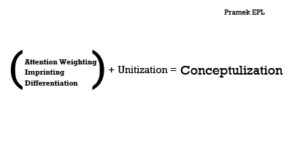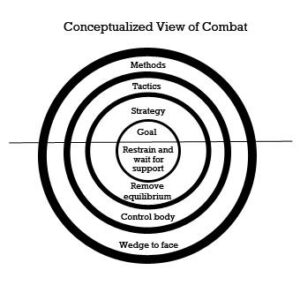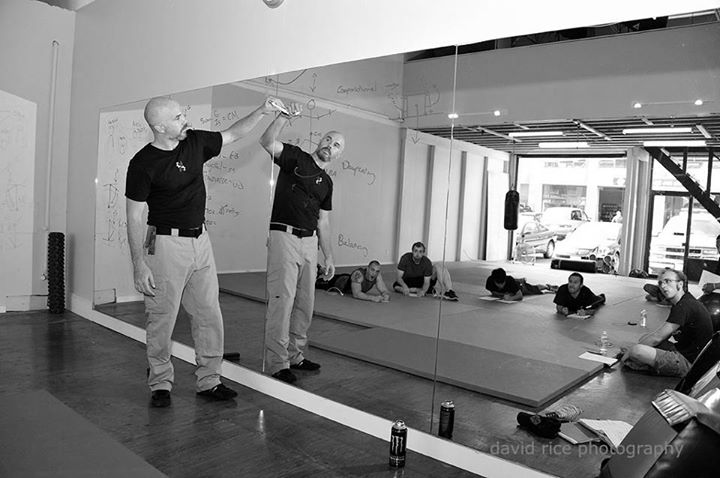I’ll be teaching an important group of people soon, won’t say anything more than that, but it’s a group who needs Pramek. While I left the physical side of martial art last year, I’ve been asked to teach CLM and I love teaching it. So, I began looking at ‘how do I simplify the learning process for the limited amount of time we will have?’
I needed to simplify the equations I use.
If a student (ex., Student A) is taught to do a throw 1000 times and another student (ex., Student B) is taught to remove equilibrium 1000 times in different scenarios, the question becomes who will be more skilled in taking an opponent down.
For student A, when the moment comes they have to use their skill in combat, the skill reflects the scenario in which they trained to do the throw. If it’s as they’ve experienced in training, they will be effective. If they feel uncomfortable with the skill, they may drive the interaction toward a scenario where they can perform the throw.
Whereas, Student B will work toward equilibrium – they won’t be distracted because they are familiar with Differentiation from the EPL. They should, if they are trained properly, apply their knowledge of physics, of biomechanics, etc., to the body of the opponent, and wherever the interaction goes, they’ll be looking for Center Mass, Line of Gravity, where the Load Bearing Area is.
For Student B the goal is removing equilibrium, so while they may not have a throw as perfect, they will be more attuned to removal of equilibrium. They will have seen how to remove equilibrium 1000 times, while Student B will have performed a throw 1000 times over. Student B, in realistic terms, will be the more adaptable, well-rounded student, while Student A will become a specialist in one capability.
Within this is why Pramek focuses on function and goal orientation. Why is the student there…to remove equilibrium or to perform a throw? This is a key difference between procedural learning and perceptual learning.
Here, I think it is important to point out a difference between procedural and perceptual training. There is an element of procedural learning that is utilized in perceptual learning. In perceptual learning, one has Imprinting, where they will perform the skill repeatedly to understand it’s mechanics. This is very procedural, ‘Technique X x 1000’ to get an imprint. As we discuss in the CLM, the learning methods can be combined. Typically MMA styles of learning are based on teaching procedurally, and then the student learning perceptually through experience. In combative styles, where ‘1 tool for 5 jobs’ mentalities take place, finesse is replaced by high impact/gross motor skill techniques, procedural ‘if x, then y’ training is even more present.

But, let’s do a thought experiment and take a moment to look at the two thought processes.
Procedural would be expressed as ‘if x, then y’ or ‘x+y=z’.
Perceptual training would be expressed as ‘z = _ + _’ or ‘to get Z, I need to perform _.’
What do you have that you can use, versus what do you need that you might not have access to. Remember, we are talking high stress, high resistance….as we discussed in the Technique Math video, access becomes an issue in combat.
There is nothing wrong with utilizing the two together and this must be remembered. A student should be taught to perform certain tasks to proficiency, such as a strike or kick or take downs, which are general gross motor movements, and the basis of self-defense.
But, what about a throw? This is where the difference between the two thought processes differ. For the moment, let’s assume both combatants are of near equal skill level, as opposed to a novice versus an expert.
A throw supposes that either the student can set up, or the opponent will walk into the position. But, upon looking at sambo and judo competitions, one finds these throws take a prolonged time to occur. So, if two competitors of equal skill can not throw each other using an art, why is there an expectation that it will work in a highly stressful, life or death situation against a determined opponent? What if, during the clinch, someone pulls out a knife? The longer the fight goes, the more likely the fight environment is to radically change, whether it’s weapons or location. Suddenly looking for the throw seems

Throws are complex, that is why. They are a large series of complex motor chains that require years of training, experience, development, timing consistent hand positioning to create leverage, etc. Removal of equilibrium, on the other hand, does not – it requires theory and multiple applications to not discover how to throw, but how to move the line of gravity outside the load bearing area. This may seem more complicated than a large series of complex motor chains, but this method has a simple basis – goal orientation. It’s just movement, and when combined with strikes, kicks, head butts, etc., it’s actually a very simplistic way of fighting.
If I’m just going for Z, I just have to figure out what _ and _ are. But, if I’m going for a throw, then I have to find the X and the Y.
If you want to test all this out, hen you train students, give them a definite goal and an abstract goal. Tell them, ‘throw the opponent on their back’ as one goal; then provide them another goal, tell them ‘remove your opponents equilibrium.’
See what happens.
Now, this is where perceptual can become challenging, and sometimes needs procedural input for inexperienced students. What is that challenge? Finding Z, the _ and _ building blocks. Until the student has a lot of experience, they may not know the _ and _’s available, or they will work within their limited experience. With procedural, you can give examples of what Z looks like. You can give a technique example of equilibrium removal, show them the building blocks. Over time, as the student gains experience through the EPL and DPT, and through CBTM, they will know what the _ and _ are.
This requires a good teacher – one who can help the student move beyond the aesthetic and immediate successes of the procedural technique. One who can use the CLM to teach how to look for the building blocks, one who can dive into WHY the X + Y = Z technique works from a ‘scientific’ level.
Experiment, work with the concepts, see what works best for your students, or in the case of the CBTM, remove yourself and let them learn. Regardless, get out there, teach, challenge yourself and your students to be better.
Right now, I’m working on combining the CLM series into one book, with a lot of additional content, updates, graphics. I’m even including samples of two decades of drawings to see my struggle moving from procedural to perceptual. Looking forward to releasing it in the next few months! – Matt

